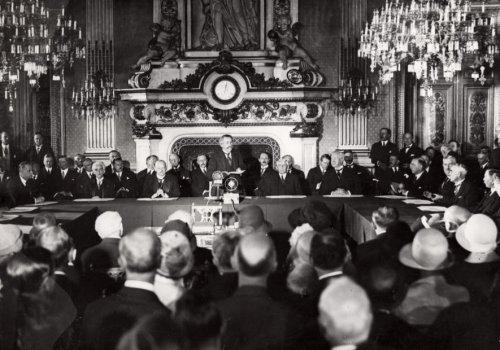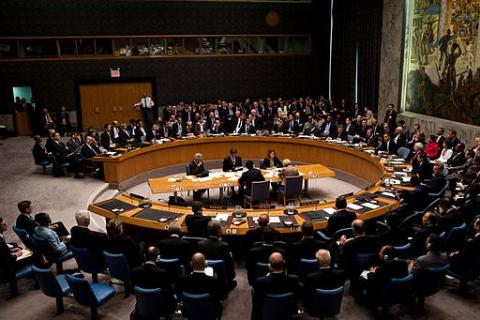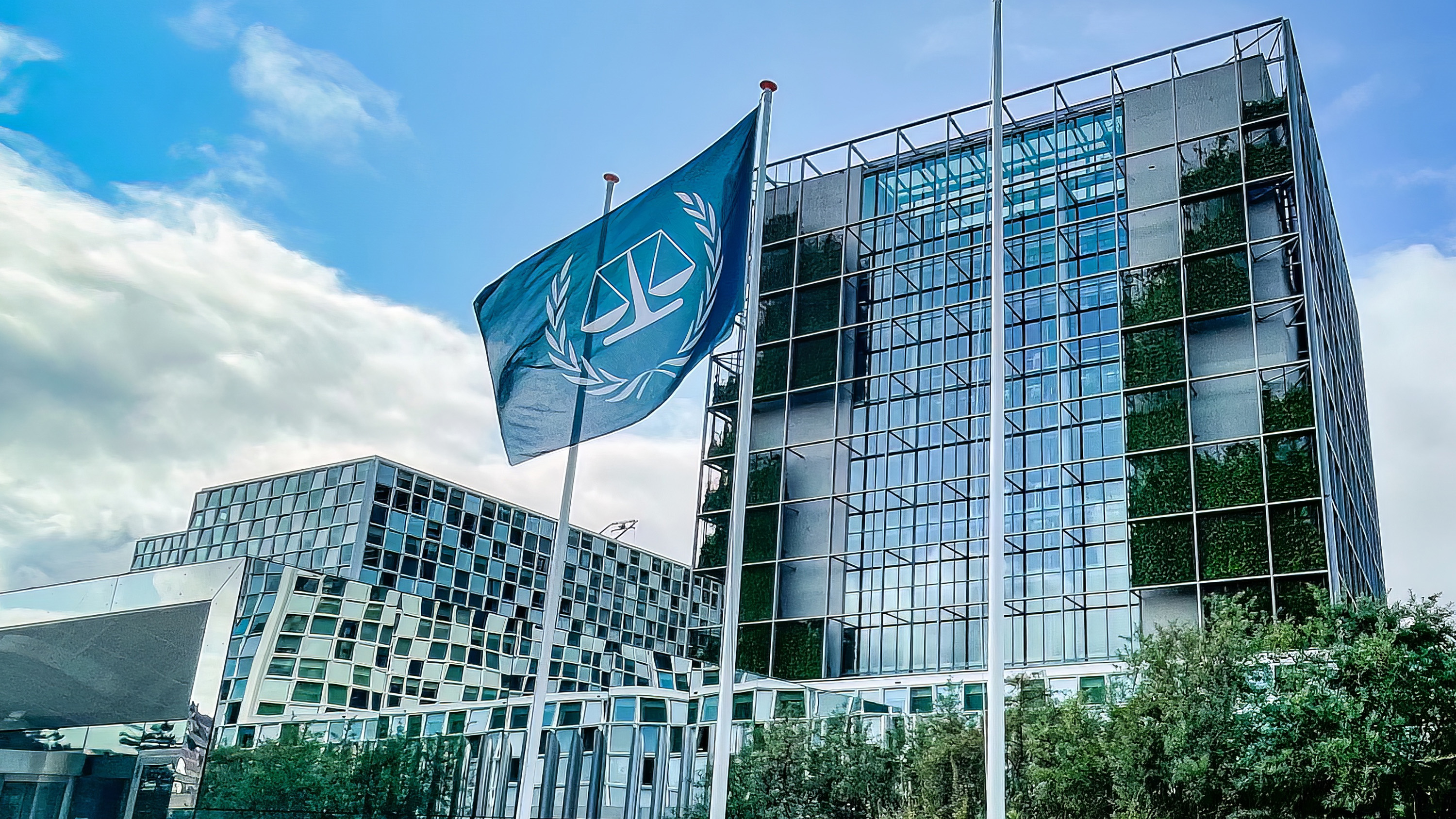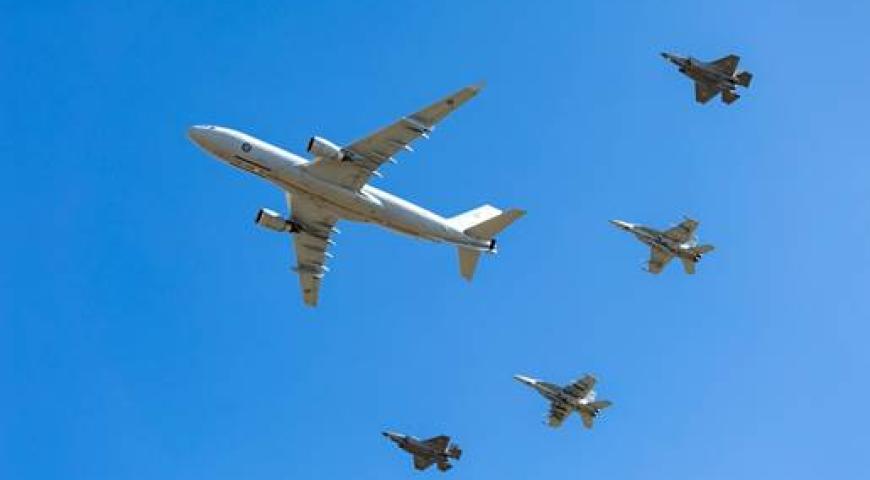Of the three questions examined in this series—understanding how international law works, the rules constraining the employment of military forces in war , and the question of when the use of force is justified at all —it is the last question, the subject of this third and final instalment, that is the easiest to explain.
This question of when force is justified in international law is also probably the least important one for a military audience. Unlike the laws regulating the use of force in wartime, which are critical to the principled practice of the profession of arms, the question of whether a nation’s resort to war is, in itself, legal has arguably less relevance to the Service member. He or she should be presumed to accept in good faith the principled determination under domestic (national) law that a resort to armed conflict, approved by the institutional mechanisms of the state, is lawful. At its heart, the question if any given war is a lawful war—although very much one of international law—is appropriate for consideration by those at a different echelon, those who have the authority to decide whether or not to wage war. Accordingly, there is no individual legal sanction on a military member for mere participation in war that is, in fact, unlawful when waging it was countenanced by the soldier’s national authorities (such as the 2003 US invasion of Iraq). As members of the armed forces and, indeed, as citizens in a democracy, there comes a point where our individual participation in the institutions of the state inevitably requires us to bend to the decision-making mechanisms of those collective institutions. There can be no effective collective action if every individual gets a vote on what the institution does next. When military service is voluntary, there may be some residual question of whether or not a Service member wishes to continue in Service if the war contemplated is of questionable legality, but this question does not arise in conflicts where compulsory service is a necessary incident of citizenship. That having been said, as professional military men and women engaged in the application of force, we might be forgiven for some curiosity as to when any such resort to force is perceived as lawful and, therefore, legitimate. It would seem strange, indeed, if we were collectively indifferent to such questions.
Conversely, international law is itself indifferent towards domestic political or constitutional prerequisites to using force. International law treats all states as equal—democracies or dictatorships alike—and so does not concern itself as to their internal political machinations. Although, as we shall see, ‘right intention’ may have been a factor in determining the legitimacy of war in ancient times, under the law as it stands today resort to force is either lawful according to the internationally applicable principles, or it is not.
Historically, the legitimacy of armed conflict was as much a religious, moral, and ethical question as a legal one (religion, science, philosophy, and law being somewhat more of a unified enterprise back then as opposed to the distinct fields of study we find today). ‘Just war theory’ tried to move beyond the even more ancient doctrine of ‘might makes right’; itself really just a way of rationalising events by retroactively providing them with divine sanction (like the ‘divine right of kings’ giving the incumbent ruler divine sanction for his rule, victories were seen as having been divinely ordained, as evidenced by the victories themselves). St Thomas Aquinas attempted to articulate something a bit more principled, and these principles can be thought of as ‘just war’ theory or an early, Christian, approximation of international law. Although a religion which seeks and professes peace, once Christianity moved from a religion of the oppressed to the religion of the state, it had to abandon absolute pacifism, and accommodate the needs of statecraft. The doctrine proved helpful later when Christendom went to war.

Aquinas held, that for a war to be just:
- war should be waged by a sovereign authority (prohibition on waging private wars)
- war must have a just cause
- the just cause must be accompanied by the ‘right intention’.
More expansive lists have followed (just cause, war as a last resort, war declared by a proper authority, right intention, as well as practical considerations to make war worthwhile such as a reasonable chance of success and the ends being proportional to the means used). Like the rules relating to the appropriate conduct to be followed within war (jus in bello), the principles that sought to define circumstances when engaging in war was permissible in the first place (jus ad bellum) sought to put some moral and ethical limits on the most difficult and violent forms of human interaction. In contrast, Sun Tzu and Clausewitz’s more neutral view and the almost ‘complete liberty to use force from the seventeenth to the twentieth century’—of war being simply ‘politics’ and, as such, just another way of achieving the ruler’s ends—avoided the moral and ethical enquiry in a more detached, soldierly way instead of engaging in it as an ethicist.

The Kellogg-Briand Pact was the first attempt to outlaw war (although the League of Nations required states to submit disputes to arbitration, it did not attempt to outlaw war as such). The parties to the 1928 General Treaty for Renunciation of War as an Instrument of National Policy ‘condemn[ed] recourse to war’ and agreed to ‘renounce it, as an instrument of national policy in their relations with one another’. The goal during that period was to reverse the legal presumption in favour of belligerence.
In the aftermath of the Second World War (1945), the United Nations Charter came into being, spurred by that war’s many atrocities and the epic number of civilian and military deaths. The principles from the Kellogg-Briand Pact were incorporated into the more robust UN system. The rules regarding the use of force by states contained in the Charter may be challenged from time to time, but are clear: ‘[N]o one really contests that the use of force is strictly forbidden in contemporary international law. This prohibition is recognized as a core rule of the law of nations.’ There are, of course, some ambiguities at the margins and this keeps legal scholars and foreign ministry legal advisors occupied. As a general matter, the International Court of Justice has rejected any ‘innovative’ interpretations of the law. Cyber is an evolving area, but that is more a question of determining how the law applies to novel situations, and not real confusion as to the content of the law itself.
Contemporary international law prohibits resort to force to threaten or attack other countries (UN Charter, Article 2, para. 4: ‘All Members shall refrain in their international relations from the threat or use of force against the territorial integrity or political independence of any state, or in any other manner inconsistent with the Purposes of the United Nations.’). The prohibition on the use of force is itself a reflection of the primacy of the two primary incidents of statehood: state sovereignty and the territorial integrity. So long as a national government has effective control over its land and sea territory, it has the legal protection of the Charter against other states trying to dislodge it by force. This goes into the related question of international recognition of states and governments and the definition of a state’s maritime borders, perhaps topics for another time.
The prohibition on the use of force includes a prohibition on one state assisting another state in a breach of the prohibition on the use of force, to include a prohibition on letting the aggressor use the assisting state’s territory to attack a third country (looking at you, Belarus). The use of force within a state’s own borders is generally a matter for the state itself (see below). As such, consent is an appropriate justification for another’s country’s military to be in your country; an invitation to conduct military operations in another’s territory makes the resulting use of force therein lawful.
The ‘crime of aggression’ is simply another aspect of the general prohibition on the threat or use of force, with additional punitive enhancements for the leaders responsible for the breach (‘the planning, preparation, initiation or execution, by a person in a position effectively to exercise control over or to direct the political or military action of a State, of an act of aggression which, by its character, gravity and scale, constitutes a manifest violation of the Charter of the United Nations.’). The differences between a breach of the UN Charter and the crime of aggression really have to do with who is making the enquiry; whereas the Security Council is concerned with the lawfulness of any use of force, it is the International Criminal Court (ICC) which concerns itself with whether or not the crime of aggression has been committed by individuals. Just as the Geneva Convention is the standard against which most soldiers, sailors, airmen, and marines will be held for their conduct within war, so is the Rome Statute of the ICC a standard against which to judge senior leaders and politicians for their decision to wage war in the first place. The two are related in another way: the UN Security Council can refer a case to the ICC if it sees fit to do so, providing another potential link between a violation of the UN Charter’s prohibition on the use of force and an ICC prosecution for the crime of aggression. An important notion from the first article in this series bears repeating: unlike the domestic law with which we are most familiar, the content of international norms and violations of international law can be both useful and relevant even in the absence of obvious enforcement mechanisms.
Individual and collective self-defence is an explicit exception to the prohibition on the use of force when there has been an ‘armed attack’ on the state trying to defend itself. The UN Charter, Article 51 provides: ‘Nothing in the present Charter shall impair the inherent right of individual or collective self-defence if an armed attack occurs against a Member of the United Nations, until the Security Council has taken measures necessary to maintain international peace and security. Measures taken by Members in the exercise of this right of self-defence shall be immediately reported to the Security Council and shall not in any way affect the authority and responsibility of the Security Council under the present Charter to take at any time such action as it deems necessary in order to maintain or restore international peace and security.’
The overall goal of the Charter is to constrain the resort to force so that it becomes much less likely. To this end, the ‘de minimis’ rule means that not every violation or use of force makes armed response in self-defence permissible. Similarly, the use of ‘anticipatory’ self-defence, even to an imminent threat, is still an open question but likely not a thing; most commentators believe that an actual armed attack is required to give rise to the right of self-defence unless the danger is overwhelming and immediate, such as a potential enemy’s irrevocable commitment to carrying out a nuclear attack. International law is not intended to be a suicide pact, it is just very sensitive to the many, many attempts to expand exceptions to the point where they overcome the prohibition in the rule itself. Further, reprisals involving the use of force (inherently illegal acts, in any event) and ‘pre-emptive’ self-defence are not allowed.
The use of force by non-state actors is probably insufficient to trigger the ability of a state to claim self-defence authorises them to use force in response ‘[b]ecause in principle under international law, an apparently private act is only to be classified as a State act if the State controls the private actor’. The degree of state involvement in any use of force by non-state actors may be a relevant factor in determining if the act can be imputed to a state, and therefore give rise to a right to self-defence by the party suffering the attack.

The UN Security Council can itself approve a use of force if necessary ‘with Respect to Threats to the Peace, Breaches of the Peace, and Acts of Aggression’ (another explicit exception to the prohibition on the use of force, so long as force is ‘necessary to maintain or restore international peace and security’). As such, resort to the Security Council is the only legal mechanism available to legally authorise a pre-emptive use of force.
Similarly, the UN undertakes peacekeeping to keep formerly warring parties apart and to monitor the area formerly subject to hostilities (despite the fact that the word appears nowhere in the Charter). Peacekeeping principally proceeds on the basis of the consent of the parties and only incidentally involves the use of force in defence of the lightly armed peacekeeping force itself or of the mandate. Sometimes peacekeeping operations are also undertaken by regional international organisations.
States generally have the authority to use force within their own borders and among their own populations—this is a necessary incident of state sovereignty and territorial control (a domestic monopoly on violence is inherent in statehood). As such, an international use of force to prevent a humanitarian catastrophe within another state is probably only permissible if it falls into the category of UN Security Council-approved actions, which approval is something the Security Council may do, but not something it must do (while ‘the idea of a duty to take forcible collective security action has not consolidated into a norm under international law … the Security Council’s power to authorize a use of force is no longer in question when it comes to protecting a civilian population that has been the victim of genocide, crimes against humanity or the systematic commission of war crimes in cases where the national government in question does not fulfill its responsibilities or is itself behind the attacks.’).
The ‘right to protect nationals’ located abroad has been much misused in the past as an excuse for armed intervention. It is often impermissibly used as pretext to achieve other objectives. In so far as it still exists, the right is limited to the removal of the intervening state’s citizens from the territory where they are located to a safe location.
If you have read this far—and especially if you also took the time to read the first two instalments in this series—you now know more about international law than 98% of everyone else, including lawyers. As those who are expected to function at the pointy end of the spear at diverse locations around the globe, if necessary, it is a mistake to view international law as a subject only for specialists. Indeed, international law is the context in which armed force is applied. Understanding the basics of how it works is a professional obligation.
Biography
Garri Benjamin Hendell is a Major in the Pennsylvania Army National Guard. Although he is not a lawyer in the Army, lawyering is a thing he used to do. In addition to his 19A (19C!) branch designation in the Army and his 07J additional skill identifier, he holds law degrees from the University of Oxford, the Université Libre de Bruxelles, and the New York University School of Law. He practised law for over ten years at a 600+ lawyer firm. He later worked at the National Guard Bureau, initially in uniform, and later as a civilian branch chief.
Defence Mastery
Social Mastery
The Use of Force by States Under International Law © 2023 by . This work is licensed under CC BY-NC-ND![]()
![]()
![]()
![]()
Please let us know if you have discovered an issue with the content on this page.
Comments
Start the conversation by sharing your thoughts! Please login to comment. If you don't yet have an account registration is quick and easy.




